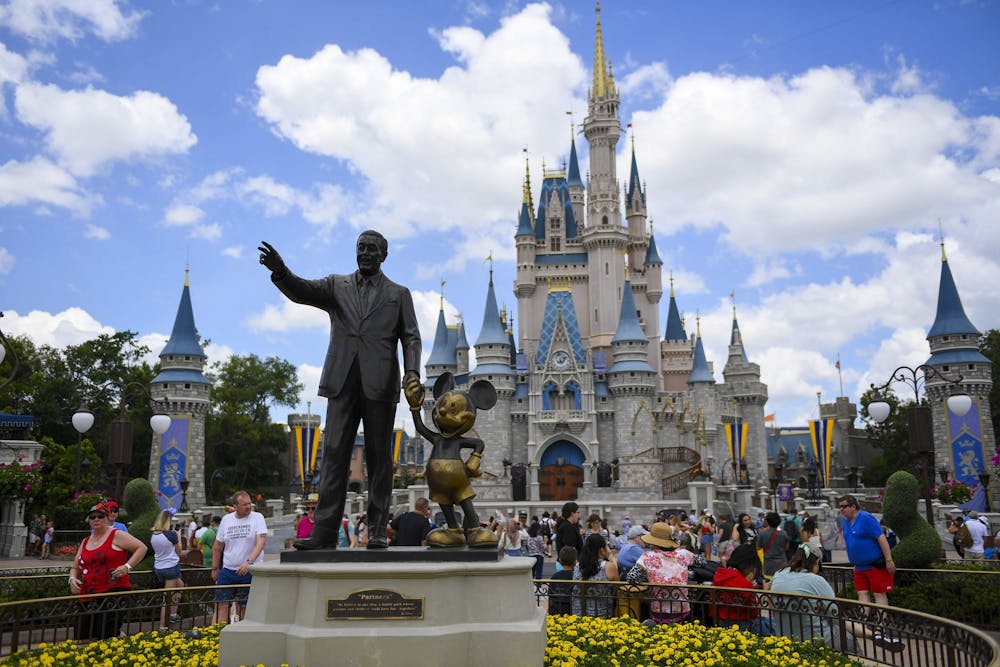In recent years, Disney has been breaking down the boundaries of sexuality, race and gender stereotypes — at least that is what they want you to believe.
Throughout its history, Disney has had many controversies surrounding its content and inclusion. Between queer coding villains to refusal of LGBTQ characters and extreme gender stereotypes, there has constantly been a call for Disney to fix its ways.
Although there is an argument to be made that Disney has been trying to be more inclusive, there is also a counterargument for every piece of evidence presented.
In 2017, Disney released a live-action film of “Beauty and the Beast.” It appears to be a progressive version of the story, portraying the first openly gay character seen on a Disney film, Lefou. This caused major controversy surrounding the film, and many people were mad Disney would portray anything other than a heteronormative relationship.
When you look back at the film, Disney did the bare minimum. I would even argue that they were way below bare minimum.
[Related: OPINION: Representation matters more than historical accuracy]
Lefou does not become openly gay until the last two minutes of the movie. The scene which shows an unknown man being spun into Lefou's arms lasts for a total of two seconds.
If you blink, you miss it.
This isn’t the only movie that Disney has had major controversy around.
In 2021, Disney released a movie called “Luca,” a story of two sea monsters who try to blend in as humans in an Italian town after running away from their parents.
If you have seen the movie, there is almost no denying that the whole film is a metaphor for coming out and being a part of the LGBTQ community — except, apparently you can deny it. Disney did.
This movie was a major step towards inclusion of LGBTQ characters in Disney media. We got a heartfelt film, portraying two young boys trying to discover who they are and struggling to find acceptance in a world that fears them.
Yet, the creators of “Luca” have denied in multiple interviews that “Luca” is about anything more than two sea monsters running away. Even if it wasn’t their original intention with the movie, they have denied it even being a possibility. Yet, so many people connected with this movie, including young members of the LGBTQ community who found representation, and it was stripped away.
In 2009, Tiana became the first black Disney princess, but she spent the entire movie as a frog, taking a strong black woman and removing all the aspects that show her diversity — her skin color, her strong independent nature, even her job.
[Related: Black Voices: What’s really behind the Black Ariel backlash?]
In 2016, Moana was brave and independent but still had to have a male savior. Same goes with Judy Hopps in “Zootopia.”
These films influence how young children grow up.
We learn by example. When we grow up with Disney as our primary source of entertainment, we start to believe that this is what the real world is like: heterosexual, women conform to what men want, men must save the day, queer characteristics make you the villain and so on and so on.
Although Disney has made steps in the right direction with movies such as “Coco” and “Raya” and the Last Dragon,” there is still a long way to go. For future generations to stand a chance at a less hateful world, they need to be taught about the LGBTQ community, shown less heteronormative stereotypes and the beauty of racial and ethnic diversity. Teach men to cry or women to fight. Show them that a relationship is not always between a man and a woman. Portray more cultures and ethnicities on the screen in a positive light.
Raise a generation to be compassionate and caring for one another and for themselves.
Gentry Keener (she/her) is a sophomore studying journalism and political science.






